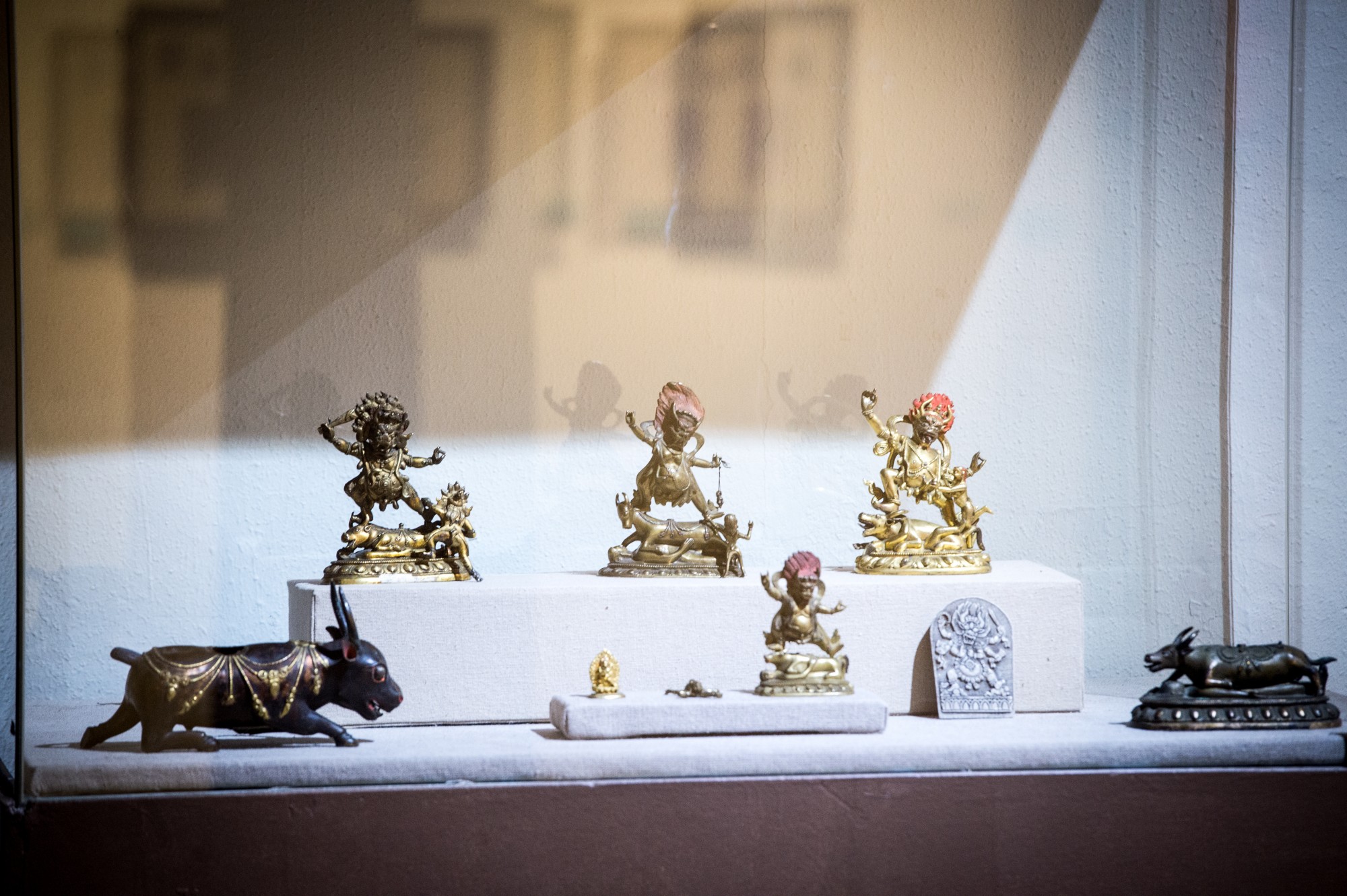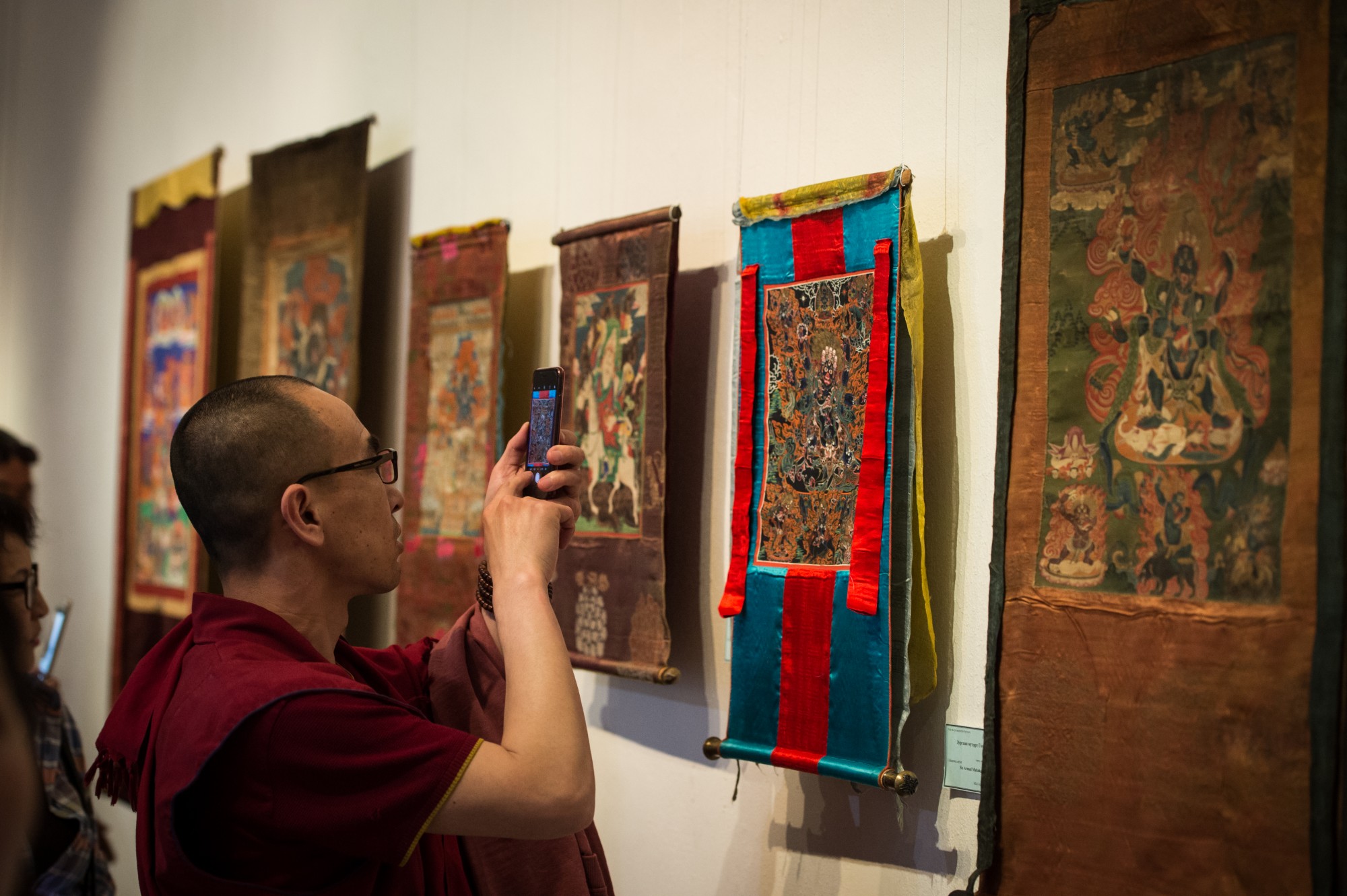On the occasion of the 40th International Museum Day, the Fine Arts Zanabazar Museum is displaying an exhibition “Dogshdiin avral” (literal meaning “Salvation of the wrathful ones”), one of the “Arvan Khangal” (literal meaning Ten Dharmapalas) an exhibition series.
U.Sarantuya, the Director of the Fine Arts Zanabazar Museum, said “After the spread of Buddhism, Mongolian people crafted portraits of gods in many different ways, treasured and worshipped them. These cultural heritages have now become an inspiration and pride to us. This time, we are presenting some of the collections of dharmapalas, the protectors of Buddhism”.
Known as the Ten Wrathful Ones (or Dharmapalas), these deities, namely Jigjid (Yamantaka), Ochirvaani (Vajrapani), Gombo Chagdugba (Mahakala), Gongor (Siti Mahakala), Damdinchoijil (Yama), Baldanlkham (Shridevi), Shalshi (Sritzaturtuka), Namsrai (Kubera), Jamsran (Begze) and Tsamba (Esura) are understood as wrathful deities and defenders of Buddhism.
The exhibition displayed the creations of Yama, Esura, Sritzaturtuka and Mahakala in many different art forms, which consists of around 100 works of anonymous artists of the XIX century. Wrathful deities are considered magnificent and fearful at the same time as they’re mostly displayed as stomping on men or dismembering them and wearing necklace made out of skulls. These deities, who are supposed to wage war without any mercy against the demons and enemies of Buddhism, represent the overcoming of troubles and tragedies.
The exhibition is scheduled to last for a month.


On the occasion of the 40th International Museum Day, the Fine Arts Zanabazar Museum is displaying an exhibition “Dogshdiin avral” (literal meaning “Salvation of the wrathful ones”), one of the “Arvan Khangal” (literal meaning Ten Dharmapalas) an exhibition series.
U.Sarantuya, the Director of the Fine Arts Zanabazar Museum, said “After the spread of Buddhism, Mongolian people crafted portraits of gods in many different ways, treasured and worshipped them. These cultural heritages have now become an inspiration and pride to us. This time, we are presenting some of the collections of dharmapalas, the protectors of Buddhism”.
Known as the Ten Wrathful Ones (or Dharmapalas), these deities, namely Jigjid (Yamantaka), Ochirvaani (Vajrapani), Gombo Chagdugba (Mahakala), Gongor (Siti Mahakala), Damdinchoijil (Yama), Baldanlkham (Shridevi), Shalshi (Sritzaturtuka), Namsrai (Kubera), Jamsran (Begze) and Tsamba (Esura) are understood as wrathful deities and defenders of Buddhism.
The exhibition displayed the creations of Yama, Esura, Sritzaturtuka and Mahakala in many different art forms, which consists of around 100 works of anonymous artists of the XIX century. Wrathful deities are considered magnificent and fearful at the same time as they’re mostly displayed as stomping on men or dismembering them and wearing necklace made out of skulls. These deities, who are supposed to wage war without any mercy against the demons and enemies of Buddhism, represent the overcoming of troubles and tragedies.
The exhibition is scheduled to last for a month.



